Exquisite Tibetan cuisine map: dining from stop A to G
This year during the Spring Festival as well as the Tibetan New Year, Tibet attracted a large amount of tourists. According to data distributed by the China Union Pay, during the Seven Day Vacation period, transactions made by ordinary people swiping bank cards etc. exceeded100 blillion yuan. Amongst of which dining purchases was the largest proportion. It is said that without eating Tibetan cuisine one will not have really been to Tibet. Tibetan cuisine is the quintessential tradition of Tibetan people, just as throughout China’s interior there is Sichuan food, Shangdong cuisine, Cantonese cuisine as well as Hunan cuisine and more there is diversity in styling and flavoring, and the same phenomenon can be seen throughout Tibet’s various regions. It can be divided into Wei Tibetan food (the food of Lhasa, Lhoka as well as Shigatse), Rong cuisine (the cuisine of Nyingchi and other southeastern Tibet areas), Jiang cuisine (the cuisine of the high alpine areas of Nagqu and Ngari) as well as Gongting cuisine (which is similar to Wei Tibetan food). All in all, they comprise four different broad styles of cuisine.
When speaking of Tibetan cuisine, a lot of people think of beef and mutton dishes, various kinds of milk products as well as Zanba and more. Yet in reality, it is not limited to these and the cuisine found in each part of Tibet is truly rich and diverse. In fact, it is likely that no one knows exactly how many different kinds of cuisine there are. Nevertheless, this article will provide you with a “map” of Tibetan cuisines, and we shall depart from Lhasa and imaginatively experience with our pallets this favorable aspect of the regions of Tibet.
Tibetan Cuisine A – Lhasa
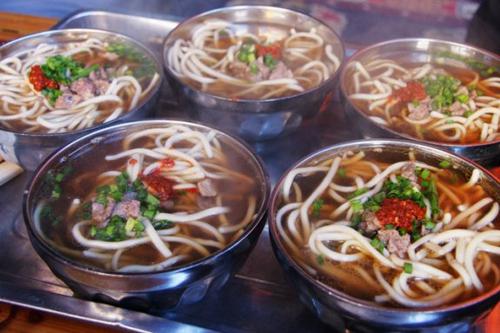
In Lhasa, Tibetan noodles and sweet tea are standard. Tibetan noodles are a form of traditional Tibetan cuisine. It embodies Lhasa traditional culture and also functions very well at the same time as the definitive contemporary fast food of choice, and more important than this is that, along with today’s more and more rapid pace of life, Tibetan noodles have absolutely become the local peoples’ quintessential modern traditional food.
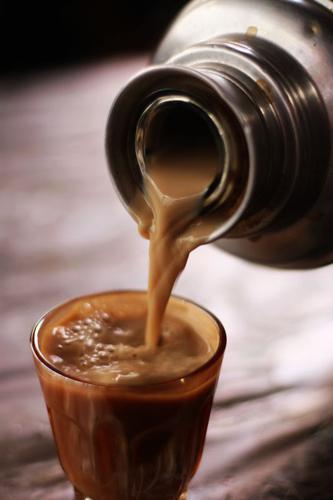
Up until now, Lhasa sweet tea has accumulated more than one hundred years of history, and it is beautiful and unique beverage within the Lhasa cuisine culture. It is prepared with red tea, cow milk, milk powder as well as white sugar and more, its flavor fragrantly sweet, rich in nutrients thereby allowing it to gain the deep admiration of many people. Sweet tea is not only a flavor that “modulates” Tibetan peoples’ life activities, it is also an attitude for life: true and simple.
Tibetan Cuisine B – The Qamdo Area
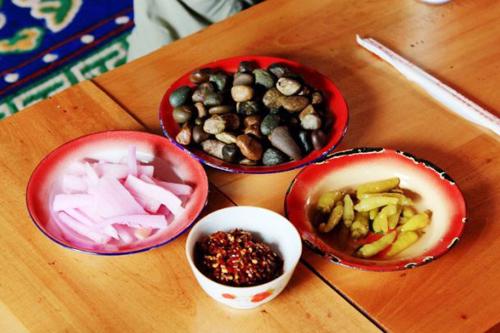
Jiajia Noodles: prepared on a plate with pebbles and greens.Only upon having eaten Jiajia Noodles has one only really been to the Qamdo area. It originates from the village of Cakalho in the Mangkam county of the Qamdo region. The meaning of the name is that the waiters will give small portions of this cuisine to guests little by little during the process of dining. If you have a big appetite you will be able to eat 10 plates or more. A uniquely flavored soup brine called “Pipa (Lute) Meat”. What is interesting is that, waiters don't use a pen to write down the amount of plates eaten, and instead place a rock on the table top each time a plate is eaten, and the waiter will count up the rocks at the end of the meal when it is time for the guests to settle up.
Tibetan Cuisine C – Lhoka

Lhoka has two major dishes: “One black one red”, they are: Red potato, and black Zanba. Red potato is rich in nutrients and has a thick sweet flavor, good for digestion, it has thin skins easy for eating, and it is very well liked by the local people. It is also recommended to fry red potato in oil!
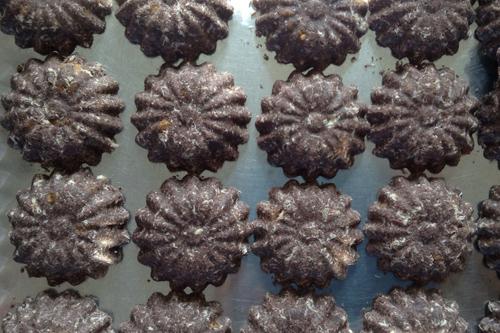
Black barley is produced using the artistic and traditional Tibetan ecological water polishing method, and thereby is sustained to the highest possible degree the rich flavor as well as nutritional value. In comparison with typical Zanba, black barley Zanba have an even higher degree of nutrition. Other than being rich in nutritional value and having many kinds of micro-elements it has type B vitamins as well as about 17 types of amino acids.
Tibetan Cuisine D – Shigatse

The Tibetan pea “the Pengbi” is a kind of cold rice noodle, and has practically become a symbol of snack items in Shigatse. Production of “Pengbi” bean juice is processed from the liquid of bean starch. When making the starch, first the beans are crushed, and after sediments are formed the lowest layer is taken to create starch, and the layer that lies more or less in the middle is taken to create Pengbi’s basic ingredients. Freshly purchased “Pengbi” is hot, sprinkle it with freshly ground pepper and it a mouthful will fully satisfy you, and furthermore the aftertaste is rich.
Tibetan Cuisine E – Nagqu
“Northern Tibet’s Three Treasures”: Cordyceps Stew with Snow Chicken, Mushroom Stew with Mutton and Buttered Pepino Rice.
Tibetan Cuisine F – Ngari
Here can be found “the beautiful liquor separated the least from the sun”. Produced in the world’s highest village of Xide, taking pure barley as the basic ingredient, it possesses natural snow-melt waters that originated from Mt. Kailas, the “king of mountain gods”, it is indeed a "divine nectar".
Tibetan Cuisine G – Nyingchi
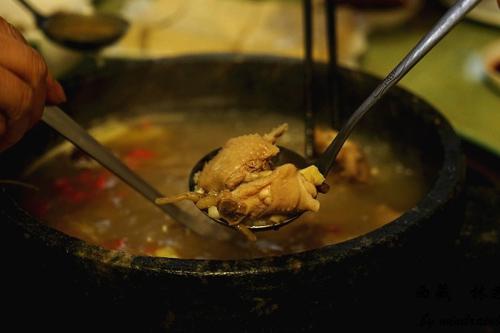
Lulang Hot Pot Chicken: hand made with roaring snow mountain melt waters, Tibetan Fritillaria, medlar, various types of wild fungus, and at the time of boiling the fresh vegetables they are cooked slowly, the soup juice is sweet and can be drank, with a wonderful seafood flavor, and a thick aftertaste, long lasting, and therefore it is hard for people to forget its flavor. In Mistakenly High Sweet Pork there are six aspects of Tibetan sweet pork: it has the highest concentration of amino acids within a meat product, the highest amount of micro elements in the meat, the longest pig intestines, the thinnest skins of pigs, the longest hair, it is a traditional cuisine of Tibetan peoples; and it is referred to as the “treasure of the plateau”.
Your Comment
Name E-mailRelated News
More >>-
;
-
-

-
A bite of Lhasa: Tibetan Cuisine
Tibetan cuisine is steeped in tradition and incredibly unique. Tibetan cuisine has light and subtle flavors, as well as distinct seasonal features: fish in Spring, cheese in Summer, beef in Autumn, and lamb in Winter.
-
-
-

-
Exquisite Tibetan Cuisine (I)
The articles show some traditional Tibetan cuisine, such as Lulang stone pot Chicken, Tibetan-style hot pot, Yak yogurt, and Tsam-pa.
-
-
-

-
Exquisite Tibetan Cuisine (I)
The articles show some traditional Tibetan cuisine, such as Lulang stone pot Chicken, Tibetan-style hot pot, Yak yogurt, and Tsampa.
-
-
-

-
Tibetan cuisine popular in U.S.
There's no need to trek to the Himalayas to get Tibetan food. With a blend of authentic Tibetan food and improved cooking styles, Tibetan food restaurants please customers from the United States.
-
-
-
A bite of Tibetan cuisine (III)
As the second season of the documentary "A Bite of China" premiered in China, Tibetan cates in the film also caught audiences' eyes. The following photos illustrate some hottest locally produced ingredients of Tibetan food.
-

